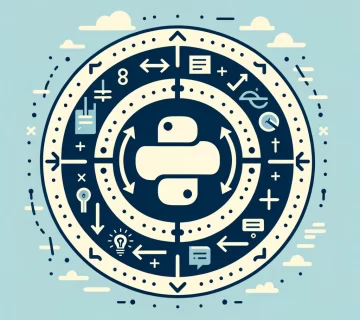Python and Its Pivotal Role in Machine Learning and Artificial Intelligence
In the fast-evolving fields of Machine Learning (ML) and Artificial Intelligence (AI), Python has emerged as a frontrunner, becoming the preferred language for many developers and researchers. This surge in popularity is closely tied to the rise of AI and ML technologies. Let’s explore why Python is at the forefront of AI and ML innovation and look at some examples of its application in these fields.
Why Python Is Preferred for AI and ML
- Simplicity and Readability: Python’s straightforward syntax makes it accessible to beginners and allows experienced programmers to focus on solving ML and AI problems rather than getting bogged down in complex code.
- Rich Library Ecosystem: Python boasts an extensive array of libraries specifically designed for AI and ML, such as TensorFlow, Keras, PyTorch, and Scikit-learn. These libraries offer pre-written code that simplifies complex algorithms and processes, accelerating development time.
- Community and Support: Python has a large and active community, providing a wealth of resources, documentation, and forums for discussion. This support is invaluable for solving problems and fostering innovation in AI and ML projects.
- Flexibility: Python’s ability to integrate with other languages and technologies makes it a versatile tool for AI and ML, where it’s often necessary to combine different tools and approaches.
- Data Handling Capabilities: Since ML and AI heavily rely on data, Python’s ability to handle, process, and analyze data is crucial. Libraries like Pandas and NumPy make data manipulation and analysis more straightforward and efficient.
Python in Action: AI and ML Examples
- TensorFlow and Deep Learning: Developed by Google, TensorFlow is a powerful library for deep learning, a subset of ML. Python’s integration with TensorFlow is widely used in creating neural networks for tasks like image and speech recognition.
- Scikit-learn in Data Science: Scikit-learn is a Python library used for various ML tasks, including classification, regression, and clustering. It’s known for its ease of use in creating sophisticated data models.
- Natural Language Processing (NLP) with Python: Libraries like NLTK and SpaCy make Python a great choice for NLP projects, enabling computers to interpret, analyze, and mimic human language.
- AI in Robotics: Python’s application extends to robotics as well. The ROS (Robot Operating System) is often used with Python to create complex robotic behaviors.
- Python in Academic Research: Python is also the language of choice in academic AI and ML research due to its simplicity and the powerful data analysis tools it offers.
Conclusion
The synergy between Python and AI/ML is undeniable. Its simplicity, powerful libraries, and community support make it an ideal language for developing cutting-edge AI and ML projects. As AI and ML continue to grow and evolve, Python’s role in this realm is likely to expand even further, making it an essential skill for anyone looking to delve into the future of technology.





No comment